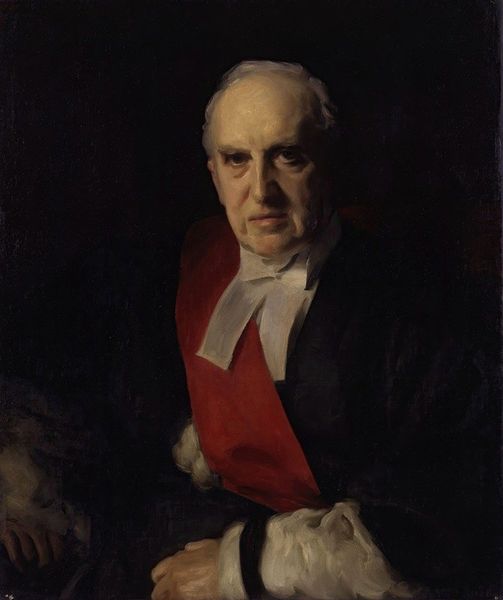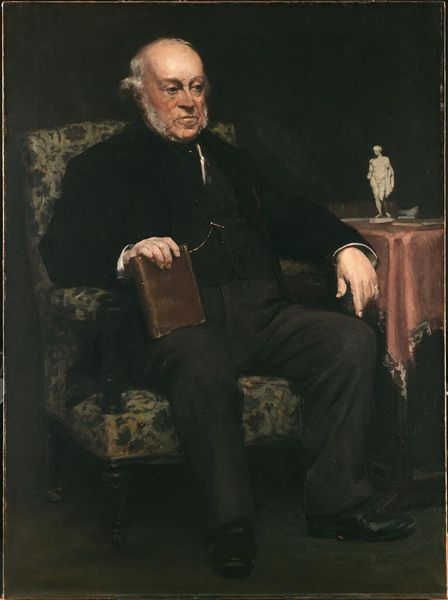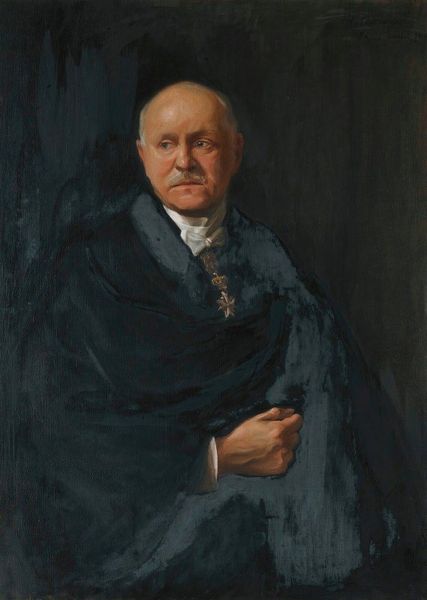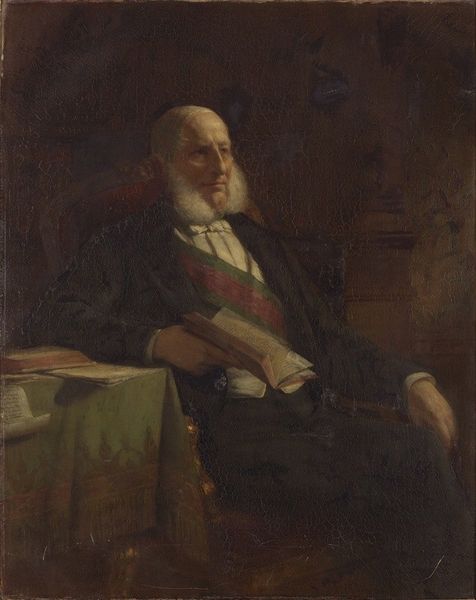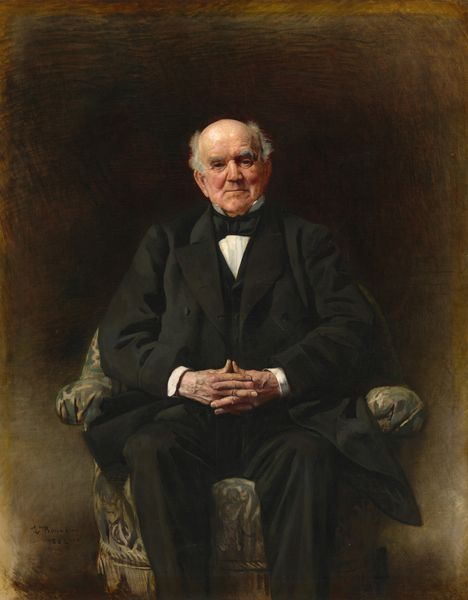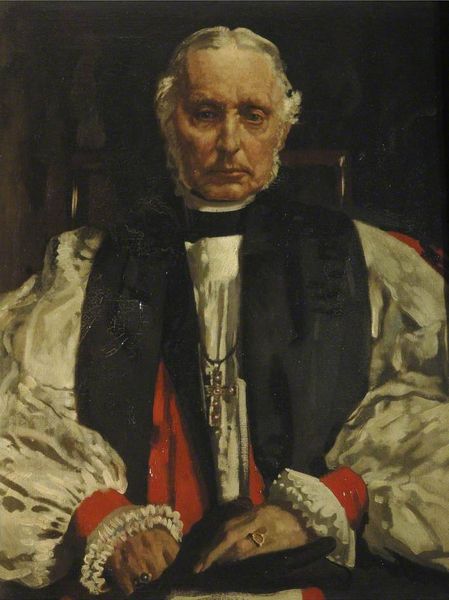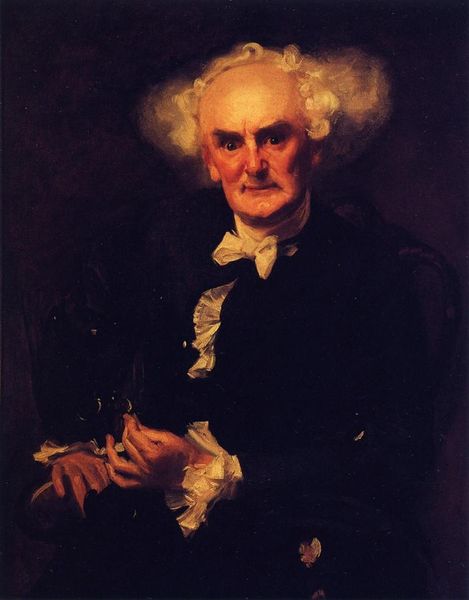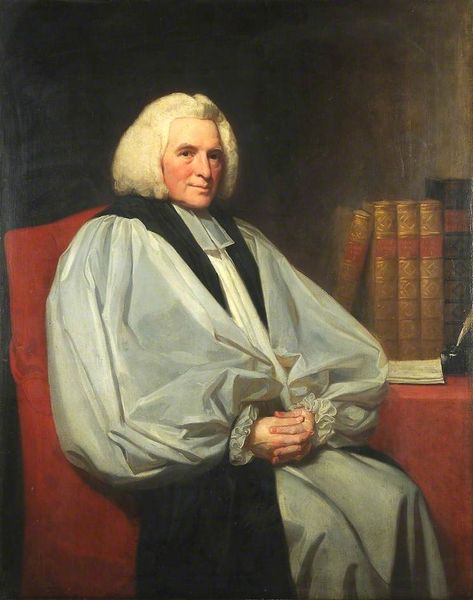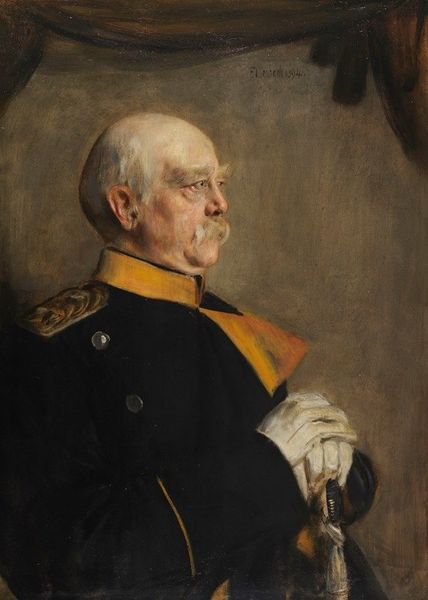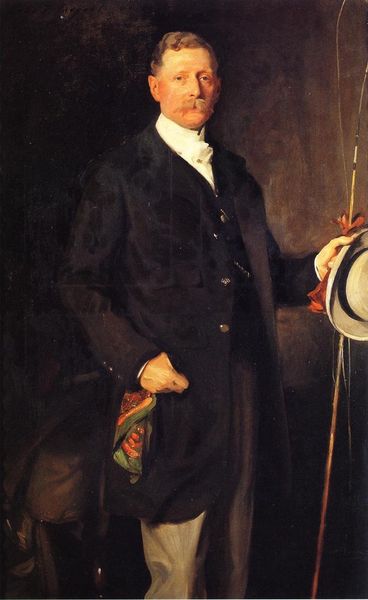
painting, oil-paint, impasto
#
portrait
#
portrait
#
painting
#
oil-paint
#
portrait subject
#
figuration
#
impasto
#
portrait reference
#
famous-people
#
male-portraits
#
portrait head and shoulder
#
animal portrait
#
history-painting
#
facial portrait
#
academic-art
#
portrait art
#
modernism
#
fine art portrait
#
realism
#
celebrity portrait
#
digital portrait
Dimensions: 130.8 x 105.4 cm
Copyright: Public domain
Editor: Here we have John Singer Sargent's "The Archbishop of Canterbury, Randall Thomas Davidson," painted in 1910 using oil on canvas. I'm immediately struck by the contrast between the stark black background and the intricate details of the Archbishop's robes. What compositional choices do you think stand out most in this work? Curator: Certainly, the stark contrasts command attention, acting as a crucial structural element. Sargent masterfully uses the play of light and shadow to delineate form. Consider the deliberate placement of highlights. Where do you see the brightest areas, and what effect does that create? Editor: I notice the light catches his face and hands, which brings them forward, while everything else sort of recedes. Curator: Precisely. It's an effective tool for guiding the viewer’s gaze and establishing a focal point. Also, observe the artist's application of paint—the impasto technique lends a tactile quality, particularly in the depiction of the robes, contrasting with the smoother handling of the face. What does that suggest? Editor: Perhaps highlighting the importance of his office, making it almost a tangible representation of his power. Does this contribute to a hierarchy of forms within the portrait? Curator: Indeed, it does. The texture serves a representational purpose and creates a dynamic surface that activates the visual field. Consider the interplay between the textured fabric and the smooth, almost porcelain-like rendering of the Archbishop's face. This deliberate contrast adds layers of complexity, enriching the overall viewing experience. Editor: This analysis truly changes my perception of portraiture; the formal elements really shape how we perceive the subject’s importance. Curator: And hopefully underscores the importance of scrutinizing an artist's decisions to deepen our interpretive understanding.
Comments
No comments
Be the first to comment and join the conversation on the ultimate creative platform.
